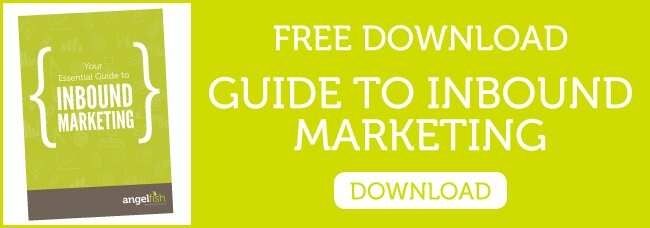Have you been slaving away in front of a white screen, trying to create a masterpiece, the like of which the blogosphere have never seen before, only to discover it isn’t converting? Well, it seems you are suffering from a lack of blogging direction.
Don’t panic, the following steps will help you diagnose and cure your blogging woes and ensure successful content marketing.
Step 1. Know your audience
A blog without an audience is nothing. Similarly if you’re not reaching the correct audience it is unlikely to reap any rewards for you. It’s crucial that you drill down and identify your buyer personas so that you can be targeted in your B2B content marketing strategy.
Your buyer personas are your ideal customer, you create a profile for them, their likes, dislikes, behaviours and goals, all based on data and research. Once you have these identified you can start to look at the issues and problems they face and set out your shop so to speak, detailing how you can solve them.
Consider their challenges, goals, their role in the purchasing process as well as where they source information from and their preferred content medium. Your content should always be guided by your buyer personas; ignore them and your conversion rate could drop off.
Step 2. Be visible
Now you have perfected your content marketing, you have to ensure you are visible to your audience. Blog writing, despite being viewed as a less formal version of writing, still needs to adhere to a few rules to ensure it hits the mark. A blog that is SEO optimised is essential, and to do this you must identify your keywords.
Keywords are the terms that your intended audience will plug in to a search engine. There are two types, long tail and short tail, both of which are important to your B2B content marketing strategy.
To break it down:
- Long tail keywords are more specific, such as ‘Size 8 floor length ball gown’ will return higher and you will have more of a chance to stand out with a new blog in its infancy.
- Short tail keywords are just that, short, such as ‘dress’ or ‘gown’ and these will return a much larger range of search results, but with a combination of short and long tail, a more established blog will rank highly and be visible.

Step 3. Make them click
An alarming statistic from Copyblogger states that, on average, 8 out of 10 people will read the headline copy of a blog but shockingly only 2 out of 10 will continue to read. Your title is one of the key factors in the success of your blog, so you have to get it spot on.
Step 4. Choose appropriate CTAs
A business blog is one of the first steps in your potential customers buying journey. If you don’t include a strong call to action (CTA), your blog could be a wasted step. To get it right you need to consider the connection between your content and what you are offering. If your blog highlights the benefits of a till for reducing wastage in a bar, your offer should align with this message, perhaps a free demonstration or money off a till.
Step 5. Be credible
The credibility of your content is crucial to the reputation of your blog and your brand. No one is safe from the scrutiny of Google and your readers won’t hesitate in looking into your claims to ensure what you are saying is the truth.
Step 6. Do you have a distribution plan?
A well written blog is a beautiful thing, but you have to get it out to your audience. Often your potential readers won’t be actively looking for your blog, so you have to bring it to them.
Great places to distribute your business blogs include:
• LinkedIn
• Facebook
• Google+
You could even consider featuring as a guest blog on industry websites that are known in your field as the go to place for information in this area. They can bring real gravitas to your offering and broaden your audience and reach substantially.
Step 7. Don’t waste your time!
Whilst content must be created by a human, we now have the luxury of marketing automation software to take the grunt work out of blogging. A good piece of software can identify SEO flags, schedule your posts and send out notifications to your database, saving you time and of course money.
Step 8. Keep it fresh…
So you think you know what your readers like, and the old adage says ‘if it ain’t broke, don’t fix it’ but this isn’t always true. Readers are looking for new content, fresh ideas and something they haven’t seen elsewhere and this should be included in your B2B content marketing strategy. Branching out into different styles of content marketing will keep them coming back time and time again.
Ways to mix your content up are:
• How- to Guides
• Infographics
• Case studies
• Ebooks
• Interviews with thought leaders
Step 9. Be consistent
Never over promise and under deliver; if you commit to a new post every day, you could struggle to achieve this and your readers could go elsewhere. It can sometimes be better to post once a week or even a month, consistently, so that your audience know what to expect from you and when to expect it.
Building a successful content strategy takes time and work, so you must make and stick to this time and resource commitment in order to see results.
Step 10. Finish what you started
A good blog will raise an issue or question and follow it through with a full answer. If you aren’t answering your readers question they will look to someone else, so ensure you have finished what you started. It is often a good idea to do some quality control before you hit publish. Ask colleagues, to read your blog and tweak accordingly.
Remember to apply everything that you learn throughout your journey to make your blog the best it can be and make blogging work for you.
Regular, valuable and relevant content is imperative to a successful inbound marketing strategy. Download our essential guide to inbound marketing for more information.


.png?width=500&name=A%20group%20of%20people%20talking%2c%20taking%20part%20in%20market%20research.%20(3).png)






